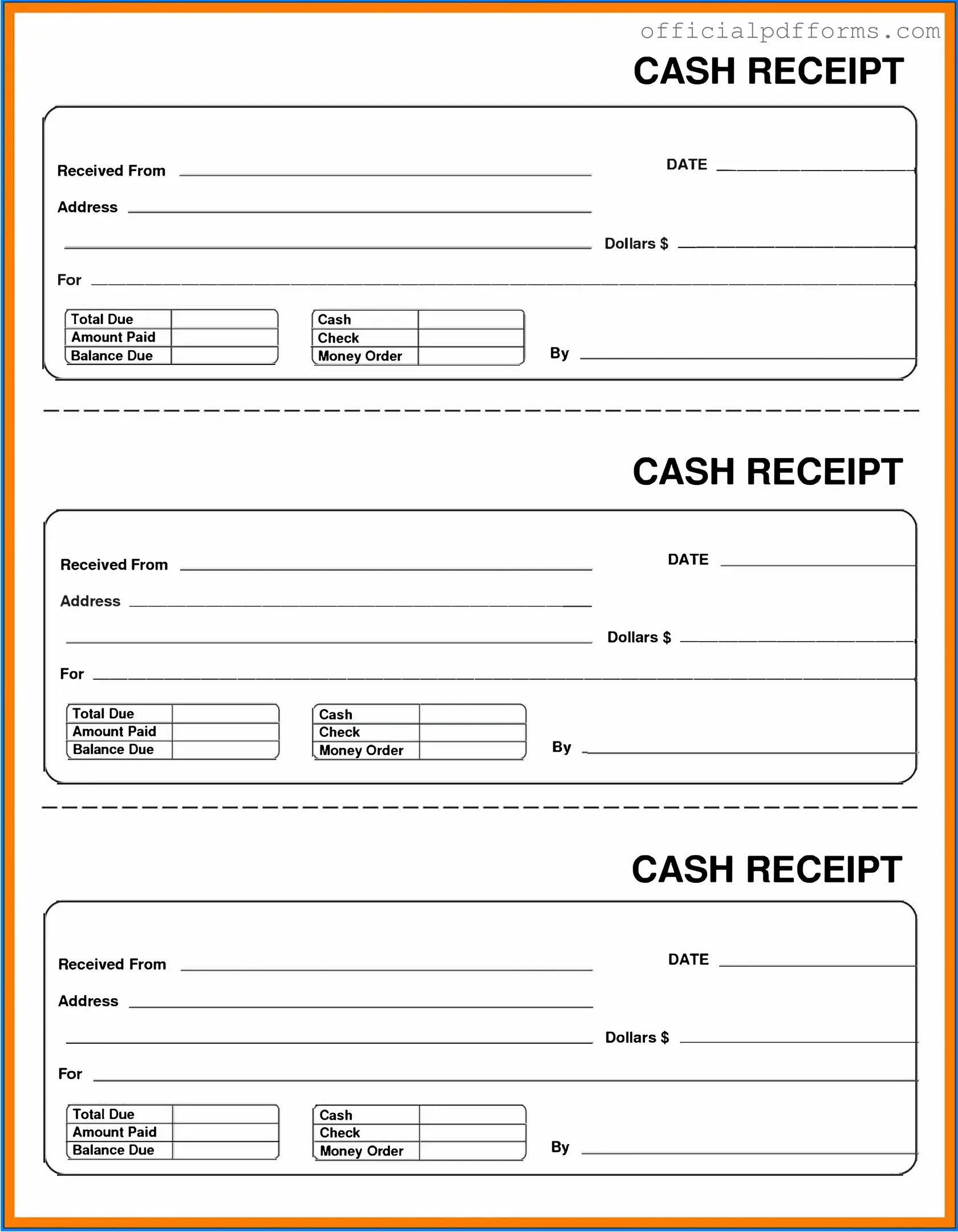- Misconception 1: The Cash Receipt form is only necessary for large transactions.
This is inaccurate. Regardless of the transaction size, a Cash Receipt form provides essential documentation for all cash transactions, ensuring proper record-keeping and accountability.
- Misconception 2: Cash Receipt forms are only used in retail settings.
While common in retail, Cash Receipt forms are utilized across various industries, including services, non-profits, and government entities, to document cash received.
- Misconception 3: A Cash Receipt form is the same as an invoice.
This is not true. An invoice requests payment, while a Cash Receipt form confirms that payment has already been received.
- Misconception 4: Cash Receipt forms are optional for businesses.
In fact, many businesses are required to maintain accurate financial records, and Cash Receipt forms are a critical part of this process.
- Misconception 5: Only the person who receives the cash needs to fill out the form.
It is advisable for both the payer and the receiver to acknowledge the transaction. This ensures transparency and reduces the likelihood of disputes.
- Misconception 6: Cash Receipt forms do not need to be stored after the transaction.
On the contrary, businesses should retain these forms for a specified period, as they are essential for auditing and tax purposes.
- Misconception 7: Cash Receipt forms are only for cash payments.
While primarily associated with cash, these forms can also document other forms of payment, such as checks or money orders, as long as they represent cash equivalents.
- Misconception 8: The information on a Cash Receipt form is not important.
Every detail on the form, including date, amount, and purpose, plays a vital role in financial tracking and reporting. Accurate information is crucial for effective financial management.
